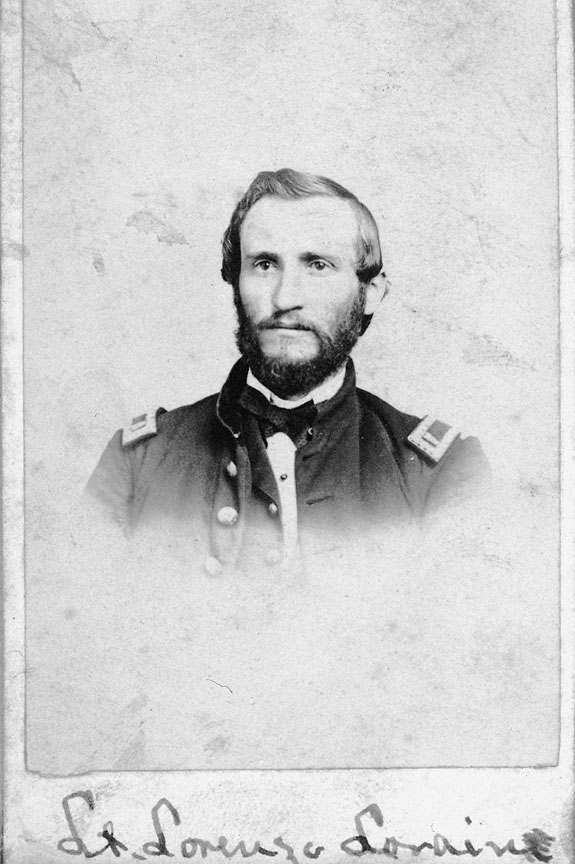- Catalog No. —
- OrHi 11123
- Date —
- c. 1857-1861
- Era —
- 1846-1880 (Treaties, Civil War, and Immigration)
- Themes —
- Arts, Environment and Natural Resources, Government, Law, and Politics, Oregon Trail and Resettlement
- Credits —
- Oregon Historical Society
- Regions —
- Southwest
- Author —
- Edward Perry Vollum
Lt. Lorenzo Lorain
This photograph of Lieutenant Lorenzo Lorain was likely taken by Lorain’s colleague at Fort Umpqua, fort surgeon Dr. Edward Perry Vollum. Both Vollum and Lorain were stationed at the U.S. military fort located at Winchester Bay on the Oregon Coast.
A native of Pennsylvania, Lt. Lorain was dispatched to the Pacific Northwest following his graduation from West Point in 1856. After a short posting at Fort Walla Walla in the Washington Territory, he was re-assigned to Fort Umpqua in the fall of 1857. Lorain’s tour of duty at Fort Umpqua lasted until March of 1861, when he was ordered to return to the East following the outbreak of the Civil War. After surviving a disabling wound at the Battle of Blackburn’s Ford, Lorain served as a professor of chemistry, mineralogy, and geology at West Point until 1870. He then taught physics at Lehigh University, ending his career as an engineering instructor in the artillery-school for practice at Fort Monroe, Virginia. Lorain improved and expanded the engineering and artillery program at Fort Monroe, and later established a photography department. He died in 1882.
Lorenzo Lorain is a notable figure in the history of the Pacific Northwest because he was one of the earliest photographers to work in the region. During his tour of duty, Lorain produced a series of rare photographs of Portland, Oregon City, Fort Umpqua, Camp Day (a temporary military encampment in the Klamath Basin in the summer of 1860), and of Native peoples living on the Siletz reservation and in the Klamath region. Most of the original Lorain photographs housed at the Oregon Historical Society are in a fragile condition. A number of other prints are in a better state and show unusually strong detail for photographs of the period. Lorain’s surviving prints are especially significant given the nature of the photographic medium in the mid-nineteenth century. The wet-plate process used by Lorain required the transportation of cumbersome equipment, including glass plates, light-sensitive chemicals, and a portable darkroom tent.
Further Reading:
Newhall, Beaumont. The History of Photography, from 1839 to the Present. New York, N.Y., 1982.
Sandweiss, Martha A. and Alan Trachtenberg. Photography in Nineteenth-Century America. Fort Worth, Texas, 1991.
Sandweiss, Martha A. Print the Legend: Photography and the American West. New Haven, Conn., 2002.
Written by Melinda Jette, © Oregon Historical Society, 2003.
